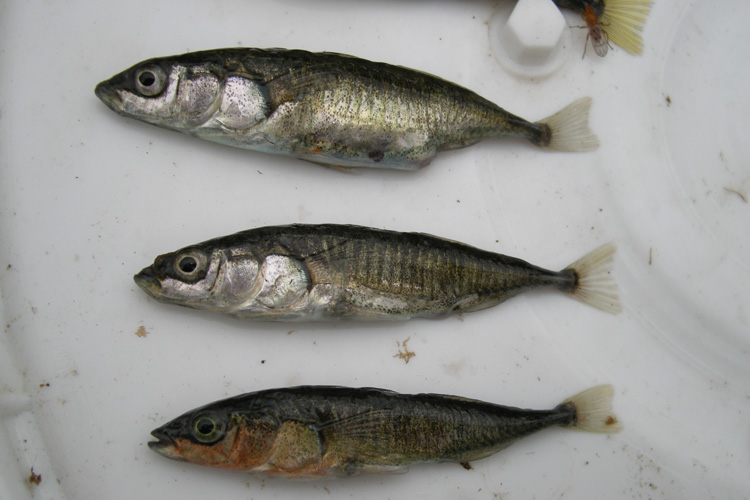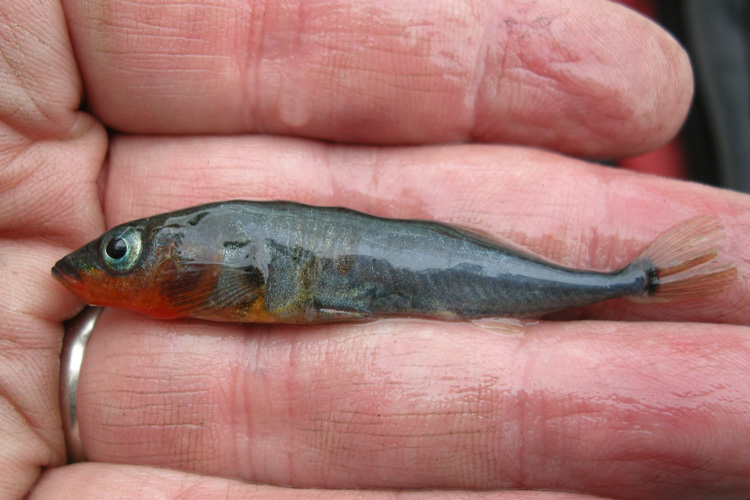Stickleback fish provide genetic road map for rapid evolution

What happens when you dump an ocean fish into a freshwater lake?
That experiment has been performed naturally tens of thousands of times over millions of years as sea-faring threespine sticklebacks — which, like salmon, travel up rivers to spawn — have gotten stranded in lakes and had to evolve as permanent denizens of fresh water.
Michael Bell, currently a research associate in the University of California Museum of Paleontology at UC Berkeley, stumbled across one such natural experiment in 1990 in Alaska, and ever since has been studying the physical changes these fish undergo as they evolve and the genetic basis for these changes. He has even created his own experiments, seeding three Alaskan lakes with oceanic sticklebacks in 2009, 2011 and 2019 in order to track their evolution from oceanic fish to freshwater lake fish. This process appears to occur within decades — very unlike the slow evolution that Charles Darwin imagined — providing scientists a unique opportunity to actually observe vertebrate adaptation in nature.
The upshot of these 31 years of research is a study, published Friday, June 18, in the journal Science Advances, that details the genomic changes that drive sticklebacks’ rapid evolution. The study, led by Bell, Krishna Veeramah at Stony Brook University and David Kingsley of Stanford University, sheds light on which genetic changes may underlie the evolutionary response to natural selection in other species.

“Our paper identifies specific genetic variants — DNA sequences — that occur at low frequency in marine populations of the threespine stickleback fish and are favored by natural selection when they colonize fresh water, which they have done countless times over the last 10 million years at least,” Bell said.
Bell and his colleagues collected threespine sticklebacks (Gasterosteus aculeatus) from three of the Alaskan lakes each year and performed whole genome sequencing to track how their DNA evolved during adaptation to freshwater. They found hundreds of underlying genomic changes that form the basis of their rapid adaptation.
“We illustrated that the genomic features that were identified as important for rapid stickleback evolution can actually be used to predict the genomic location of where natural selection occurred in other species across the tree of life, such as Darwin’s finches,” said Veeramah. “This shows that the genomic mechanisms that govern evolution of freshwater stickleback underlie adaptation in species more generally.”
“Older genes are larger than younger ones, and the larger, older genes tend to evolve faster than the younger, smaller ones,” said Bell, who taught and conducted research at Stony Brook University for 40 years before retiring to California. “We identified similar trends in other species.”
While the predictability of evolution is not an exact science, the authors believe their understanding of how the stickleback colonizes fresh water provide important insights into the genomics behind vertebrate evolution and provides insight into how evolution might proceed species-wide in the future.
Bell has been enamored of sticklebacks since the summer after his freshman year at UC San Diego, when he collected fossil sticklebacks in Nevada. He wrote his UCLA Ph.D. thesis on the fish’s evolution and has been studying fossil and living sticklebacks ever since. It was a trip to Cook’s Inlet in Alaska in 1990 that led to the current paper.
“I stumbled over the 35-year-old population in Loberg Lake during sampling for another study in 1990. It was an accident, but I recognized that rapid evolution must be occurring, so I followed up the next year and every year thereafter,” he said. “In a sense, this (research project) is my baby and a unique evolutionary genomics paper.”

RELATED INFORMATION
- Counting fish teeth reveals DNA changes behind rapid evolution (September 2014)
